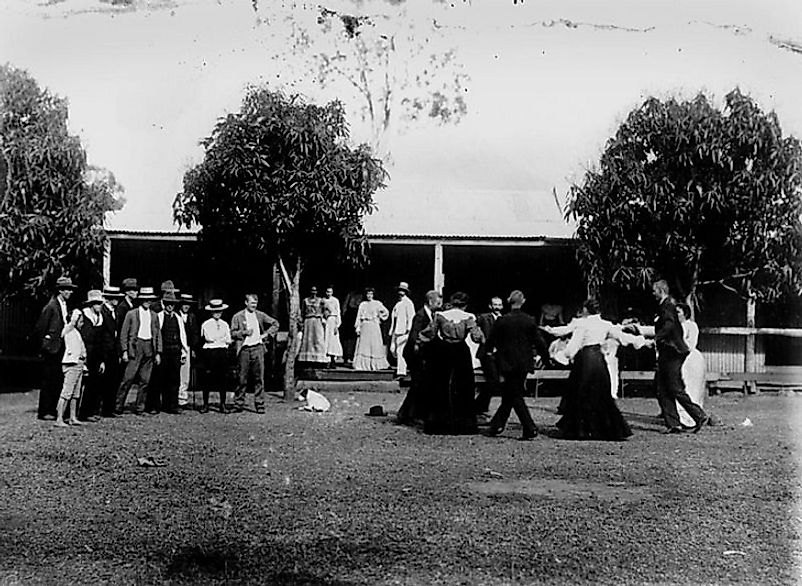What Is English Country Dance?

5. Overview and Characteristics -
English country dance is a popular form of social dancing. Participants dance in sets of between 2 and 4 couples and they follow the dance instructions called out by the caller. This dance may take place in square, circle, line, or triangle formations depending on the music and number of couples. The English country dance was often danced after a night of more formal ballroom dancing.
4. Origins -
English country dance grew in popularity in Britain during the reign of Queen Elizabeth I in the 1500’s. During this era, the dance was influenced by other dances, such as the Morris and the court dances from other European countries. One of the earliest written records of the country dance and its steps was The English Dancing Master, published in 1651. This dancing manual was complete with at least 100 songs and their specific dance moves. From the publication of this book until around the mid-1700’s, the English country dance adopted several variations and incorporated dancing in both circles and squares.
3. Spread and Development -
From England, the dance spread throughout Europe by way of the court of King Louis XIV of France. Here, the steps developed from dancing in circles dancing in lines and squares. This line dancing consisted of two lines opposing each other for the song. Dancing in squares took place among 4 couples, one at each corner. After it picked up popularity in the French court, the English country dance moved on to Germany and Italy. Various dancing guides were published throughout Europe during the 18th and early 19th Centuries. Around this time, it began to lose popularity in Europe as the waltz took its place, but not before it had been introduced in the colonies in present-day US.
2. Variations by Region and Time Period -
The most popular French variation from the late 1700’s and into the early 1800’s was known as the Quadrille. This was danced by 4 couples forming a square on the dance floor. Each couple took turns dancing while the other 3 observed.
Scottish variations, known as Scottish country dances, became popular in the 18th Century as well. When it first began, it was shorter in length than the common court dances of the time. This version includes three types, namely the jig, the reel, and the strathspey. The jib and reel are fast paced, whereas the strathspey is slower and less lively.
After reaching the North American British colonies, the English country dance evolved into the contra dance and, later, the square dance. The contra dance was performed in long lines of couples. During the dance, the couples move along the length of the line performing the steps as called out by the caller. The music involves fiddles, mandolins, banjos, and guitar.
1. Cultural Significance and Historical Legacy -
English country dance spread throughout the world and even made its way into South America. It has influenced local dance styles and evolved into new, traditional dances. Many of these new dances are regional and provide a source of cultural identity. For a brief time at the beginning of the 20th Century, the original English country dance was revived and taught at public schools. This led to an increased interest among numerous composers and modern interpretations of the dance and music continue today.







